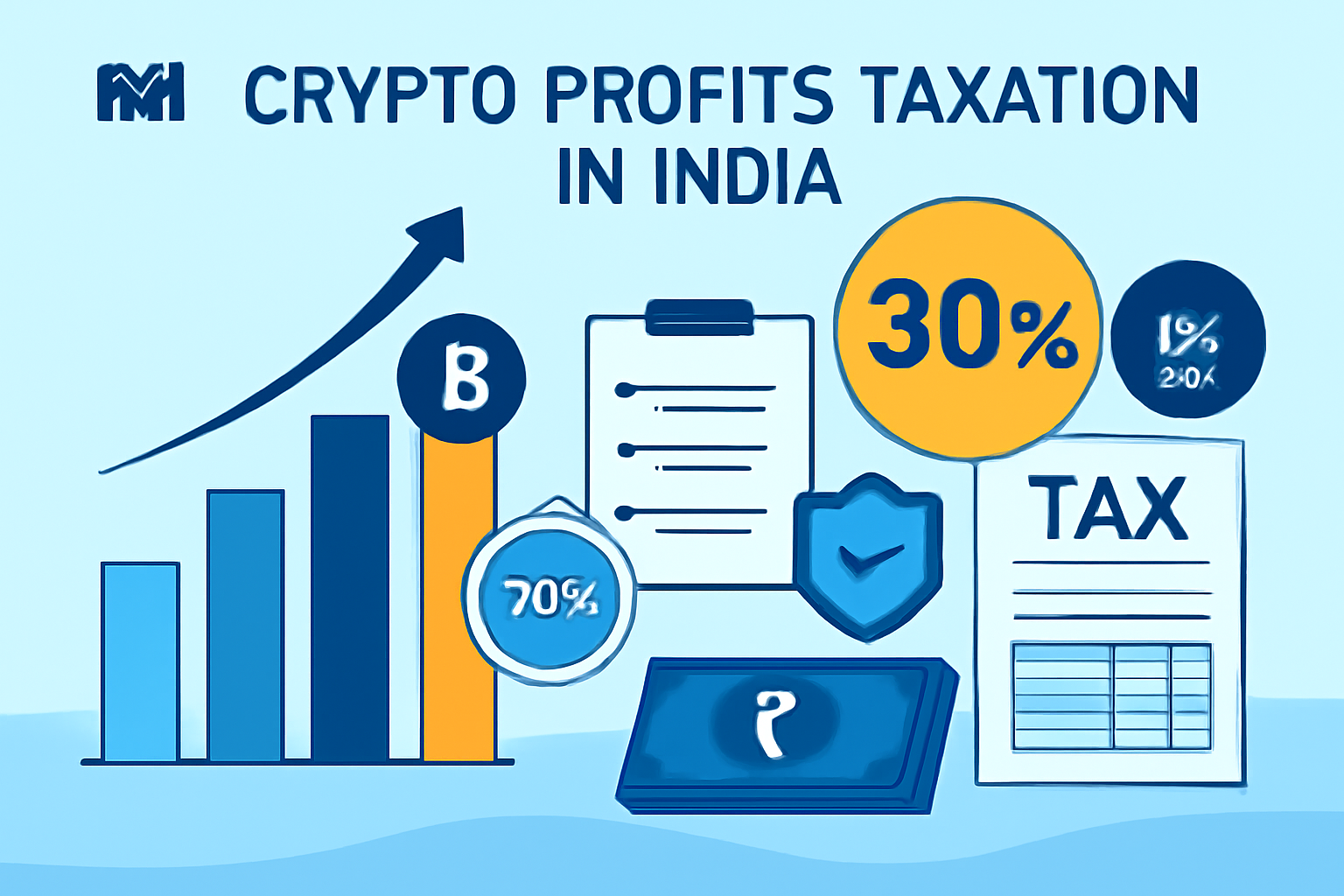Crypto Profits Are Taxed in India – But Here’s How You Stay Ahead
Cryptocurrency may offer life-changing profits, but if you’re an investor in India, the Income Tax Department wants its share. With a flat 30% tax on profits, a 1% TDS on every trade, and a newly-stringent reporting system, understanding Indian crypto tax law is crucial for every trader, investor, and enthusiast in 2025. Here’s what you need to know—and actionable steps to stay compliant and minimize your tax burden.
Want expert resources on crypto, trading, and tax-smart strategies? Visit Payback Marketing.
How Crypto Profits are Taxed in India (2025 Update)
- Flat 30% tax: All profits from selling Virtual Digital Assets (VDAs) like Bitcoin, Ethereum, and NFTs are taxed at 30%. No deductions are allowed apart from the original purchase cost—meaning transaction fees, network charges, and other expenses cannot be claimed. This applies to all types of gains, whether short-term or long-term.
- 1% TDS (Tax Deducted at Source): Every time you sell or trade crypto above ₹10,000, a 1% TDS is deducted and reported to the government, regardless of profit or loss.
- 4% Cess: A further 4% cess is added on the total tax.
- Strict Reporting: Profits, losses, and all crypto transactions must be declared in the new ‘Schedule VDA’ when filing your Income Tax Return (usually ITR-2 or ITR-3). Non-compliance can mean steep penalties and scrutiny by tax authorities.
Beware: Penalties for Non-Disclosure
Failure to disclose or pay taxes on crypto gains can attract a 70% penalty on undisclosed profits, with the new rule applied retroactively from February 1, 2025. The government has ramped up oversight and compliance, meaning evasion risks legal trouble.
How to Stay Ahead of Crypto Taxes in India
1. Keep Meticulous Records
- Archive all transaction histories from every wallet and exchange.
- Track deposits, withdrawals, trades, and value at time of transaction.
- Record gifts, staking rewards, airdrops, or mining income for full transparency.
2. Report on Time in the Right Forms
- Use Schedule VDA in ITR-2 (for investors) or ITR-3 (for trading as a business).
- Disclose every sale, swap, or spending of crypto—even if at a loss.
- Filing returns correctly will help you avoid red flags.
3. Utilize Legal Strategies to Minimize Tax
While India’s strict crypto regime leaves little room for deductions, you can still:
- HODL (Hold On for Dear Life): Tax applies only upon sale—simply holding crypto is not taxable.
- Loss Harvesting: If you’ve made a loss on an asset, consider selling it to book the loss and reduce the overall taxable gains (although you cannot offset losses against other income or carry forward).
- Choose the Right Trading Platform: Some Indian exchanges offer easy TDS compliance and downloadable tax reports.
- Stay Updated: Laws can change! Follow reliable crypto tax updates to always remain compliant.
4. Never Mix Personal and Business Holdings
- Separate personal and business crypto accounts for accurate reporting.
- NRIs and companies must pay special attention to new reporting and severe penalties for undisclosed assets.
5. Consult a Tax Professional or Use Reputable Tax Tools
- Crypto tax filing can get complex, especially if you have multiple assets or foreign transactions.
- Tools like Koinly and ClearTax, or professional accountants, can automate many calculations and help you stay legal.
Practical Filing Example for Crypto Tax in India
Suppose you bought ₹1,00,000 worth of Bitcoin and sold for ₹2,00,000:
- Taxable profit: ₹1,00,000 (2,00,000 sale price – 1,00,000 purchase price)
- 30% crypto tax: ₹30,000
- 4% cess: ₹1,200
- Total tax due: ₹31,200
- 1% TDS: ₹2,000 (on ₹2,00,000 sale; already deducted by most Indian exchanges)
Quick Tips for Staying Ahead
- Don’t ignore “small” trades—report everything.
- Don’t try to offset crypto losses against other asset classes; it’s not allowed.
- Plan your trades and withdrawals knowing the impact on taxes.
- File early, and keep records for at least 6 years.
Conclusion
Crypto in India is a high-tax, high-compliance investment—but with the right knowledge and discipline, you can trade confidently, avoid penalties, and maximize your after-tax returns. It pays to be proactive. Educate yourself, leverage the latest tools, and partner with seasoned professionals when in doubt.


